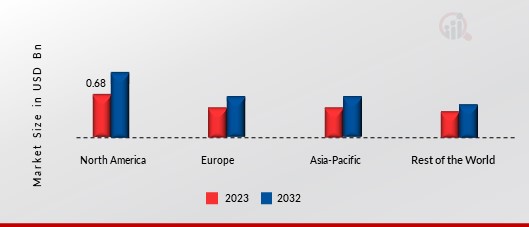Growing need for organ transplants is driving the market growth
Market CAGR for HLA Typing is being driven by the rising number of organ transplants. Human Leukocyte Antigen typing, or HLA typing, is a crucial procedure in organ and tissue transplantation that establishes the compatibility of the recipient and donor. The proteins called HLA molecules, which are present on the surface of cells, help the immune system distinguish between self and non-self-cells. A close match between the recipient's and donor's HLA types lowers the possibility of transplant rejection.
Additionally, the demand for HLA typing to reduce the risk of graft rejection and immunosuppressant has increased due to the rising burden of chronic diseases, including acute and chronic hepatitis, coronary artery disease, end-stage renal disease, chronic kidney disease, and chronic renal disease among people of all ages. Using DNA-based molecular diagnostic techniques, HLA typing looks for each individual's unique set of HLA antigens. HLA matching lowers the risk of graft-versus-host disease and increases the production of new, healthy blood cells. Over the course of the projected period, this is anticipated to fuel market expansion.
Furthermore, throughout the course of the forecast period, rising demand for organ transplants due to an increase in end-stage diseases among the elderly population is anticipated to drive market expansion.
Rising organ transplant demand brought on by an increase in organ failure instances as a result of unhealthy lifestyles, binge drinking, and drug abuse is anticipated to further propel market revenue growth. The HLA typing for the transplant market is strongly impacted by the rising demand for organ transplants. Investments in cutting-edge HLA typing technology have been fueled by the need for exact HLA matching to increase transplant success rates. Comprehensive HLA profiling can be achieved by the use of high-throughput sequencing and other molecular approaches.
High-throughput simultaneous screening of numerous genes is made possible by next-generation sequencing (NGS) technologies, which also dramatically lower consumable costs. However, the entire sequencing procedure, from sample preparation to data archiving, is usually expensive and time-consuming.
For instance, the number of kidney, liver, and heart transplants that occurred in the United States in 2021 was 90,483, 11,891, 3,502, and 24,670, 9,236, and 3,817, respectively, according to organdonor.gov, which was last updated in March 2022. Due to the enormous volume of organ transplants performed in hospitals, HLA typing tests will consequently be used more frequently, which will fuel the expansion of this market. Thus, result in driving the HLA Typing market revenue.
The increasing prevalence of autoimmune diseases and the rising demand for organ transplantation are driving advancements in HLA typing technologies, which are essential for improving patient outcomes in personalized medicine.
National Institutes of Health (NIH)












